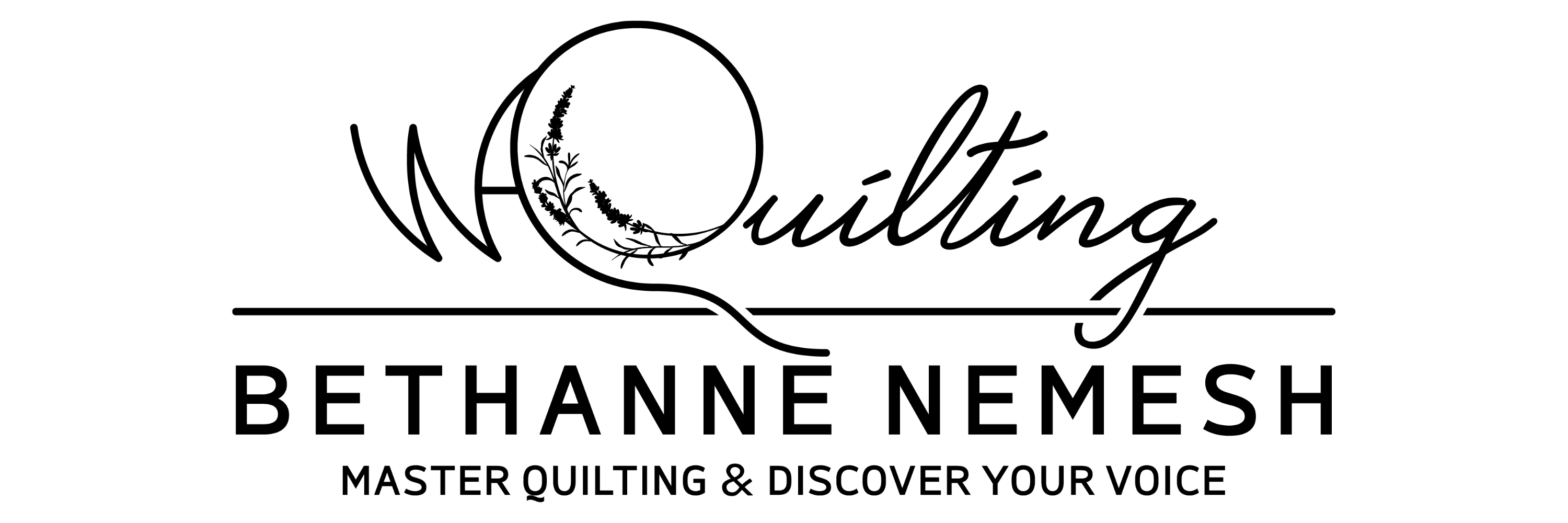I have ABSOLUTELY lost my cool with some digitally printed fabrics!
Have you been noticing more and more digital printed fabric on the market? Sure..it’s SO pretty. I basically love it….HOWEVER….you may notice there is a really negative uptick in the white flares of turned and broken thread making a white flare, or run, particularly on dark fabric.
I decided to do a deep dive into finding a quilting solution to this. I did a video IG series on it..but here is a summary of my findings in hopes of giving myself and my community some relief from this issue.


I tested numerous factors including:
- Washing vs not
- Needle type, sharpness, and brand
- Density and proximity to seams
- Silicone
- Thread type
- Stitch length
I will say…I tested all this on my Longarm. Most longarms do not have the flexibility of types of needles that sit down sewers have, however I have had some issues while piecing as well, and I believe the results can be applied to sit down piecing and quilting.

Results:
Firstly, washed fabric had less overall flares and broken threads. So, I feel its a good idea to wash, or educate a customer that washing a digital print to remove excess ink and sizing will result in a better quilting outcome.
Also, it is only fair to point out that each manufacturer has their own greige goods and printing process and it would be wildly unfair to paint them all with the same brush. Nevertheless, periodically certain colors or lines of fabric just seem plagued by this issue.
Ball Point needles were the clear winner, in the thinnest size you can run.
A longarm is “usually” timed to a standard 18 needle. With that, a quilter can use one size up and down without re timing, typically that means you can choose 16/18/20. Thinner needles, like a 14 require re timing, but often are too flexible leading to other problems. Additionally the titanium ball point out performed the standard quilting needle. My choice is to invest in size 16 ball point titanium.

Thinner “slicker” threads worked far better than even a thin but “rough” thread.
As an example, Glide worked far better to prevent these white runs than 50 weight Aurfil (for all that is an amazing cotton product). Kimono silk worked better than even my favorite 100 weight thread, Invisafil. It just is a slipperier thread.
Tension Mattered
Not the thread tension in the classic sense, however the fabric tension as where the line of quilting was on the quilt. Quilting near itself, or close to a piecing line tended to get more pulls. My theory is the sewing held the fibers more firmly and without that flex, the needle has more chances to break fibers, instead of nudge them out of the way.
A loose quilt sandwich (on the longarm) was better than over tight. Also, longer stitch length worked better, again putting less stress on the fabric. Further more, I (suspect) floating a top on a longarm would put less tension over all on the quilt surface. I float all my tops, so I did not extensively test this theory, so it merits further investigation.
My conclusion is … try not to sew very dense design on fabrics that show themselves to be troublesome and sew with an increased stitch length.
Finally, add a silicone
Wiping on Sewer’s Aid silicone by Dritz to the needle helped it slip through the digital prints best. I placed it on a Qtip and lightly rubbed the needle every few minutes. Spray Silicon by Sullivans worked just as well, spraying the fabric and did not change the fabric color..but it smells VILE and I thought I would SUFFOCATE.
You can watch the 3 episode long discussion on my YouTube channel here:
My Newsletter is the single best way to be sure to get my educational content. Be sure to click the link in the footer of this page to get updates, sales, and first chance at class enrollment!
